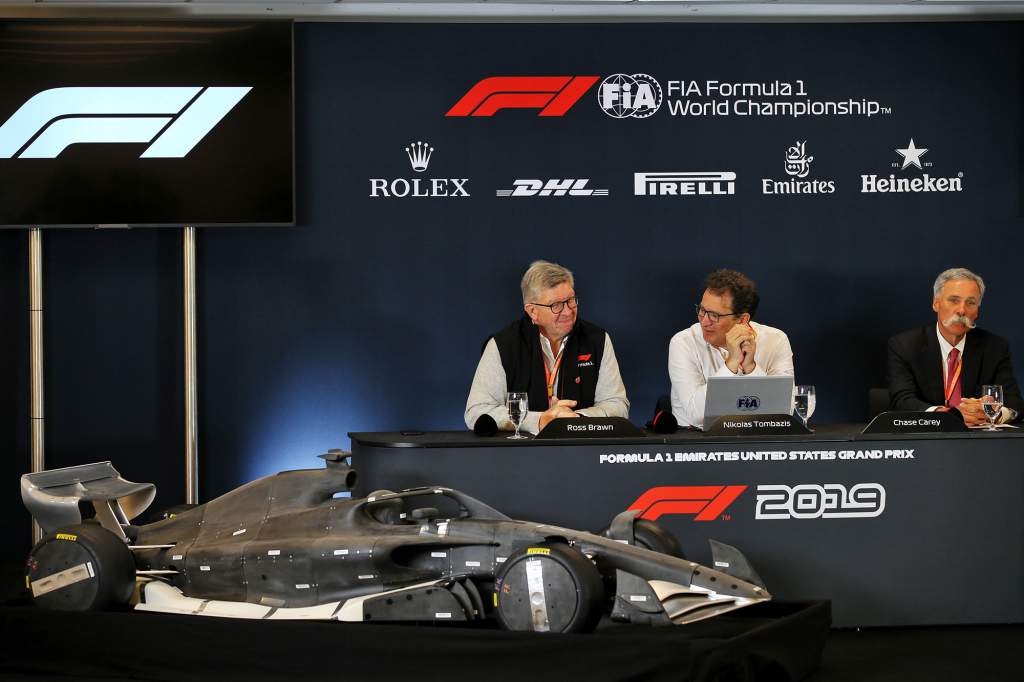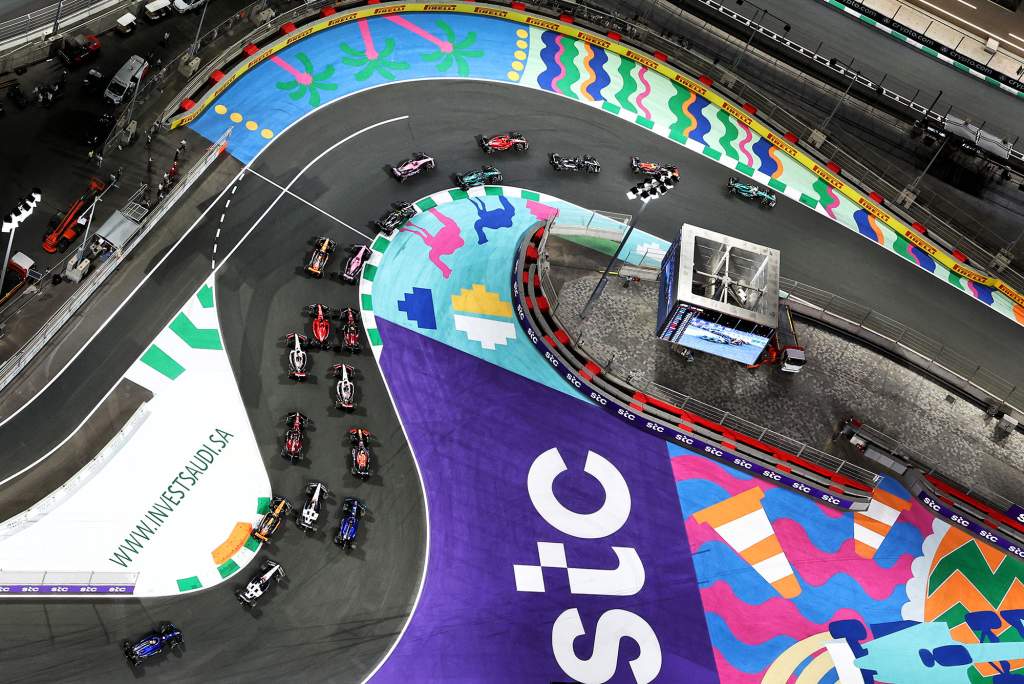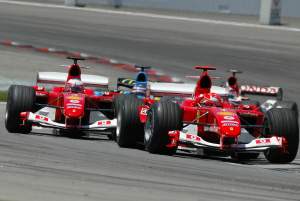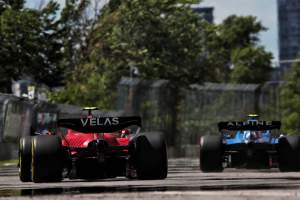Up Next

Formula 1’s new regulations have failed. They were designed to make it easy for cars to follow each other, but haven’t based on recent complaints, and promised to close up the field dramatically, but didn’t.
Or at least, that’s the over-simplified version of the argument. The reality is more complicated.
Red Bull’s domination of the first year or so of these new regulations is frustrating for the majority craving a close fight at the front. That isn’t Red Bull’s fault given it has done an outstanding job to produce cars capable of winning 19 out of 24 grands prix staged under these rules to date, but it’s a mistake to conclude the rules are therefore a failure.
Let’s return to the foundation of these rule changes. Easy to follow? That was never the intention. Instead, the pitch was to make it easier to follow. The laws of physics are the problem there as any object moving at high speed through air will always create some level of turbulence. This was always about mitigating the turbulence as short of racing in a vacuum, there’s no way to eradicate this effect.
The regulations have improved matters and it is certainly easier than it was to follow. That’s a relative rather than an absolute and there’s clearly room for improvement, but the endless endeavours of the teams to recreate the troublesome outwash effect that augments the dirty air proves there will always be a push and pull effect. Plans are afoot for the next step in this process with the 2026 rules that will introduce more moveable aerodynamic devices, which is an opportunity the FIA and F1 must capitalise on.
Ground effect aero was championed for a long time as the answer to these problems given it is more robust and less sensitive to dirty air than the top-body aero. But F1 cars are aggressive prototypes that push everything to the nth degree so it’s inevitable that there is also an effect on this type of downforce generation. Easy solutions are never as straightforward as they seem.

As the FIA’s Nikolas Tombazis said when the rules were officially announced at Austin in 2019, the aerodynamic regulations were also designed to close up the field. As he put it, “we hope these new aerodynamic regulations will mean the difference between the slowest and the fastest car will be smaller”.
With just under 2% covering the single-lap pace of the cars so far this year, that objective has been gently achieved. However, the expectation was always that this would improve as the years pass and the FIA expects things to continue to get closer in 2024 and ’25. But it would be naïve to expect 10 cars to produce near-identical performance, you only need to look at the performance gap across one-make series fields to see the folly of that.
The technical regulations are constantly being refined to uphold these objectives and have been a qualified success. Provided, that is, the expectations are realistic. After all, a difference in laptime of a couple of seconds might seem a lifetime in F1 terms, but considering that’s spread over a full lap of multiple corners, the field is already pretty close. With stability for the coming years, it should get a little closer too.

However, there are more powerful mechanisms in place, ones that need significant time to have their full effect.
There have been arguments made that Red Bull’s dominance proves the cost cap has failed, which is an ill-founded position.
The cost cap, along with the more equitable division of the slice of F1’s revenue shared by the teams under the current Concorde agreement and the aerodynamic testing restrictions that award the most windtunnel time and CFD items to the weakest teams, are all about making the performance potential of the 10 teams more equal.
Effectively, this group of rules are attempting to even up years of baked in financial inequality. While this has made it impossible for the biggest teams to brute-force outspend everyone, they still benefit from the knowledge built and investment of the previous decade or more. These changes were always going to take time to have their full effect. An advantage built up over a double-digit number of years can’t be rolled back overnight.
This is only the third season of the cost cap and its effectiveness will only be fully evident when evaluated over a timescale of pushing a decade. F1 rightly eschewed more problematic and controversial quick-fix solutions such as balance of performance to attempt to even up the overall potential of the teams, so patience is required.
The cost cap is also not, in itself, perfect, so more refinement may be needed there to optimise it. Already, there’s the talk of the need for capital expenditure allowance changes to make it possible to catch up. But it would be absurd to create a mechanism that can only have its full effect on a long timeline and then condemn it so quickly.
This is a more subtle process, one that requires patience. And even then, just because the potential of the F1 teams will become more even (never completely the same), there will still be teams that are better or worse at designing, developing and racing a car.
The ATR was also deliberately conceived to have a gentle effect. The most successful teams do have less windtunnel and CFD resources, with Red Bull having an additional reduction for breaching the cost cap in 2021, and this will have an effect. But it’s not designed to create violent lurches year on year to ensure every team has their turn winning, and it doesn’t prevent big differences in the operational efficiency of the various teams in terms of how they use their ATR resources.
F1 has a propensity for seizing on quick fixes, panaceas that usually backfire. It’s easy to propose a catch-all solution, but much more difficult to make it work. What F1 has, for better or worse, attempted to do is formulate a set of rules that should, in the long-term, make things better.
None of this is an argument for F1 standing still and the rules should always be scrutinised and evolved. If not, the temptation would always be there to say that the effect will be felt tomorrow, making it a day that never comes. There are legitimate criticisms of the current rules package and ways to tackle those.
But unless F1 itself and the watching world accepts that so complex a category will never respond well to such ‘get rich quick schemes’ that promise to make every race and season a classic, it is doomed to repeat the mistakes of the past.
F1’s current structure with the cost cap, ATR and Concorde Agreement in place offers the best chance there has ever been of creating a more level playing field. That must not be abandoned prematurely because of unrealistic expectations that it would create F1 utopia.







